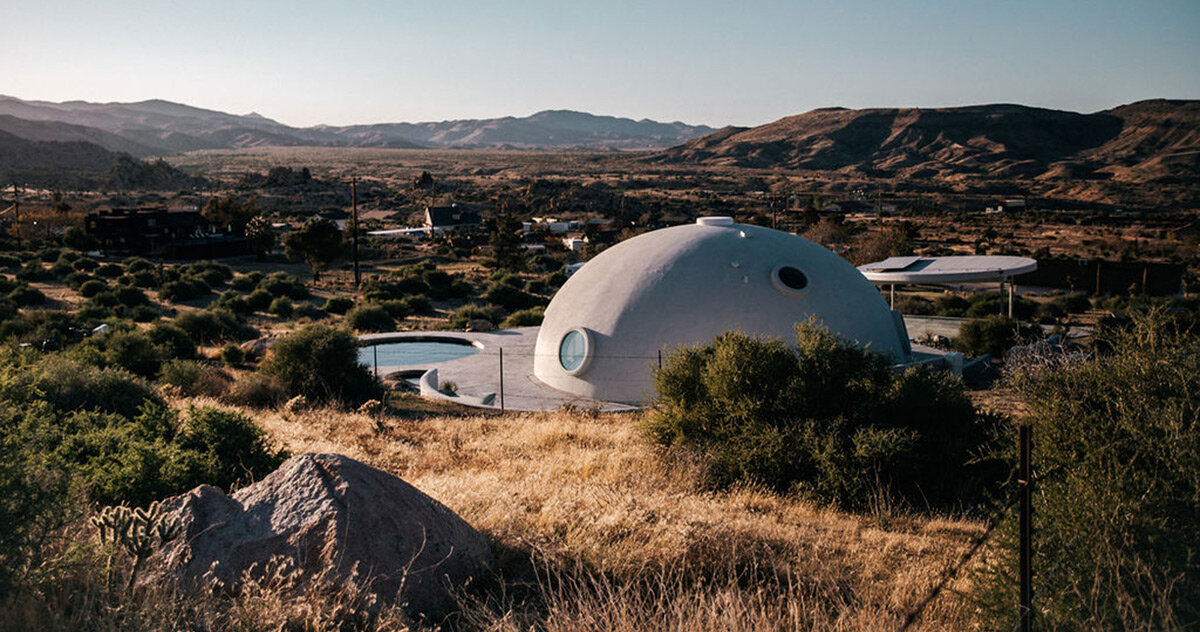“Future primitive” design in the high desert of California
The Hata Dome stands quietly on the edge of California'S Sawtooth Mountains, its curved shape, which emerges from the rocky terrain, like a relic of both the past and the future. The structure designed and built by Anastasiya Dudik-a autodidactic designer without a formal architectural training is a gesture towards resilience, intuition and an architecture that grows out of the landscape and circumstances and not out of the trend.
The architecture takes care of what Dudik calls “future primitive” sensitivity, and is based on ancestors and element materials to meet contemporary environmental requirements. The domeThe shape is a performative design decision. The thermal mass moderates the temperature, its sealed envelope of fire and earthquake with a gesture that reflects the earth's own curves. Sproscrete over reinforcement, wrapped in foam insulation and ended in Stuck, the structure causes both the logic of survival and the poetry of the shelter. The Hata Dome is available as a vacation retreat through rent Airbnb – Find the list Here.
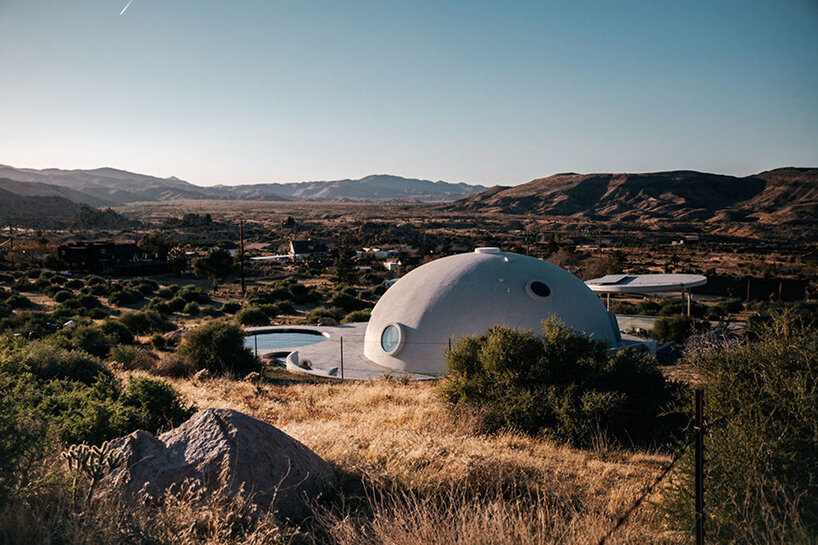
Pictures © Natasha Lee, Shannon Moss, Brandon Stanley
Hata Dome: Poetic surcharge of brutalism
In California's high desert, the Hata Dome speaks a concrete language, but quietly. While his outer silhouette nods on brutalism and the monolithic legacy of the Design of the Soviet Weit, Anastasiya Dudik again provides these precedent with empathy. The shell surrounds a refuge, not the impression. 16-foot ceilings rise, but acoustics are steamed. Natural light glides over plaster walls. To curve it softly. Even the furniture carved out of boulders follow the same continuous gesture.
The shape of the dome dissolves the familiar architectural boundaries of soil, wall and object. Inside there is no separation between the landscape and the house. It is a continuum of matter and space. The built -in furniture seems to rise organically from the ground. Niche appear like eroded bags. Even the circular salt water pool outside reflects the shape of the dome and draws the eye back to the silhouette, which anchor this sculptural oasis in the desert expanse.
Designer Anastasiya Dudik led every aspect of the project – From structural engineers and material procurement to interior designs – without a studio, a contractor or a team. It is a lonely vision that was made real by committee or congress. Your process reflects the resistance like the dome itself: the ability to adapt, endure and define yourself.

The monolithic concrete house was designed and built by Anastasiya Dudik
Live in the elements
The Hata Dome is a model of independence in California. The thick concrete walls of the structure regulate the inner temperatures and reduce the dependence on artificial warming or cooling. With solar systems, fire resistance and durability against earthquakes and wind, sustainability is not new as an add-on, but as an embedded logic. The beauty does not rule out his survival. Instead, it makes space for it.
A familiar range of materials made of concrete, steel, stone, is newly contextualized by personal memory. Dudik, surrounded by concrete structures in Ukraine, gives the dome another emotional register. Where brutalism once conveyed savings measures or control, it becomes a bit protective and personal. A concrete dome becomes a kind of body that is resilient, bent and hugged. Overall, the room invites you to slow down the time. From acoustic silence to careful light modulation, the project promotes silence and presence.
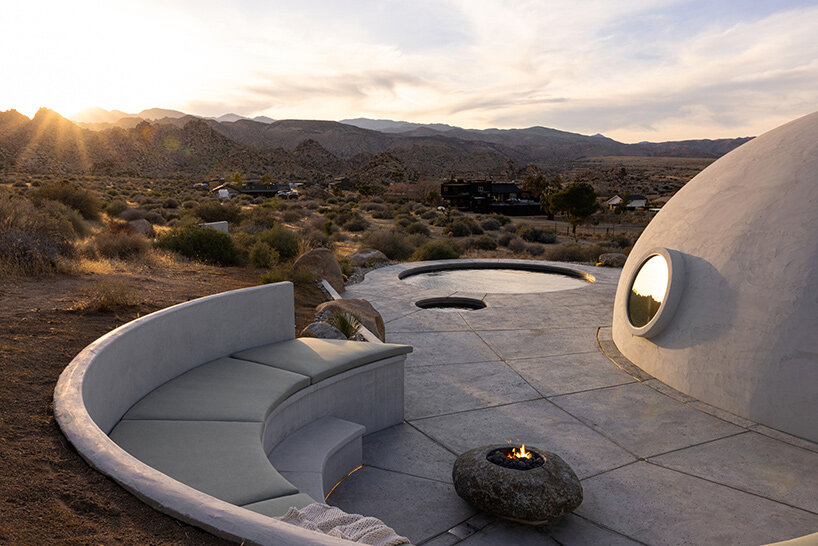
The Hata Dome reflects the Ukrainian roots of the designer and calls for concrete as a poetic material back
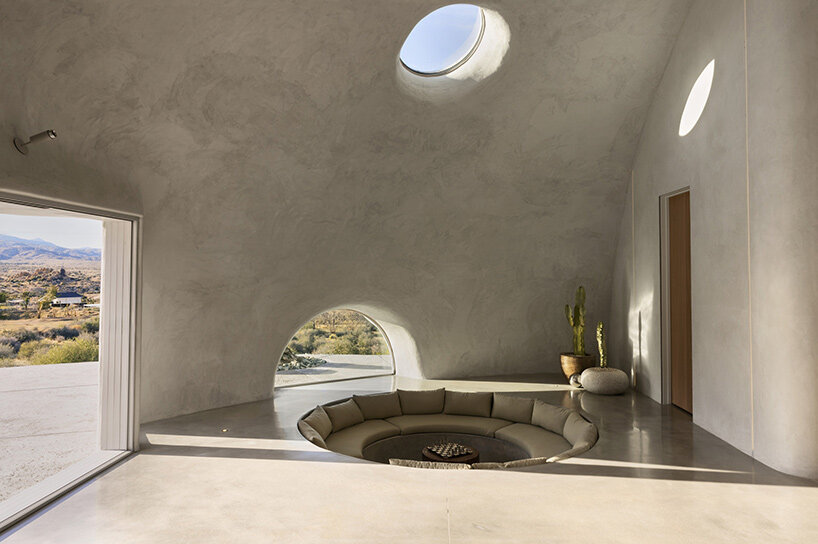
Colored forms and thermal mass support outside the grid and air -conditioned life
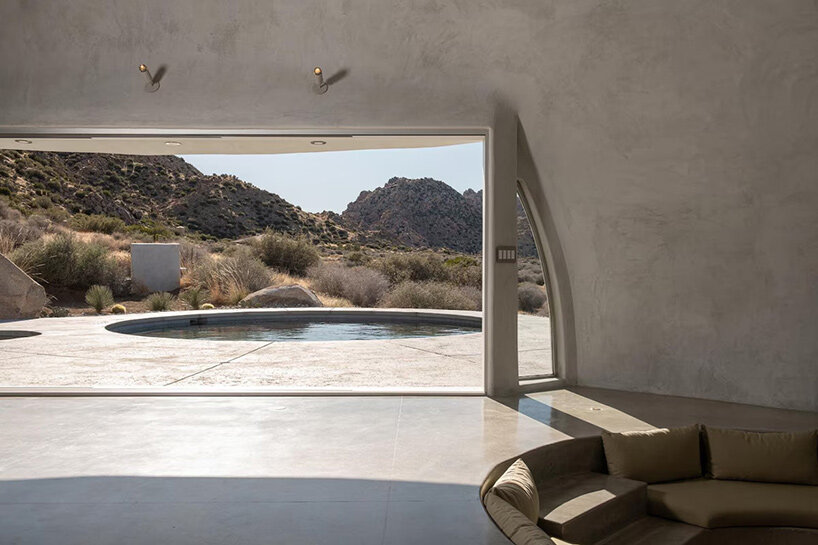
The dome is constructed with consciousness, foam insulation and manual application.
